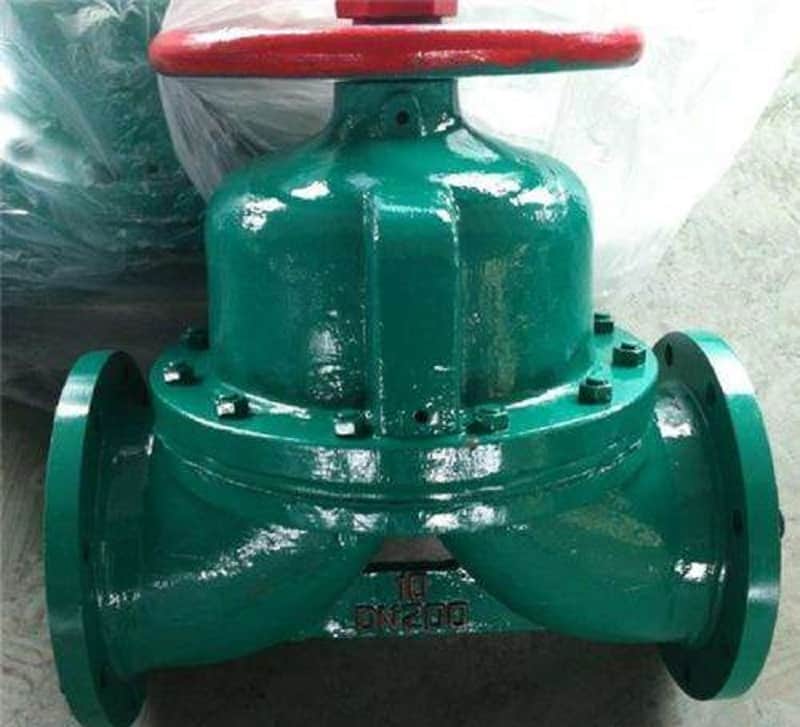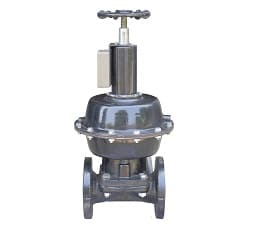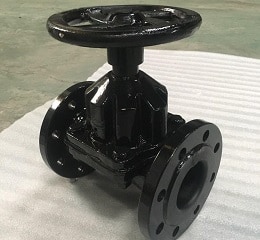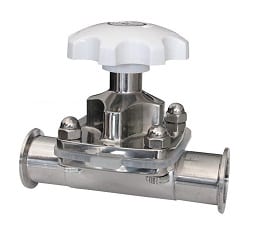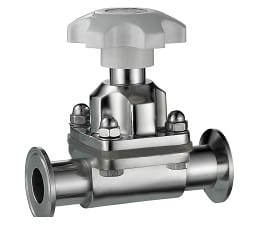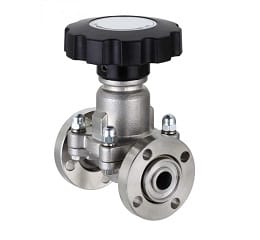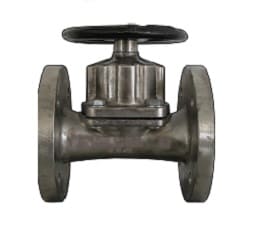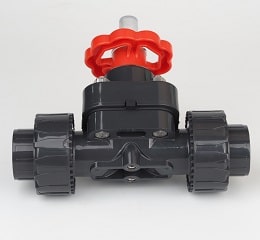Diaphragm Valve Manufacturer
Diahpragm Valve
The global industrial valves market is growing day by day, and the demand for industrial valves is anticipated to rise in the future years due to their usage in a variety of industrial applications. Diaphragm valves are one such valve for which the demand is expected to increase in the forthcoming years due to their use in various commercial construction and automation projects.
Increased industrialization and expansion of existing facilities have spurred the demand for valves due to technological innovations and boosted its growth. However, selecting the correct valve for any application is challenging and requires a good technical understanding of the valve.
Let’s find out in this article about Diaphragm Valve, its types, working, unique features, limitations, selection guide, and wide range of applications which will help you to select the correct type of valve as per your requirements.
REQUEST A QUOTE FOR MORE DETAILS
What Is a Diaphragm Valve?
A diaphragm valve is a flow control device that uses a flexible membrane to open or close an opening in a pipeline. The membrane or diaphragm is just a flexible, pressure-responsive element that transmits force to operate the valve.
The valve has a simple construction which includes a valve body, seat, diaphragm, and an actuator with a stem. The valve body and bonnets are made of cast iron and maybe epoxy coated on both the inside and outside, while the diaphragms can be typically made of stainless steel, plastics, or high-quality rubber.
These valves are capable of discrete and variable pressure control and can be operated both manually or by an automated actuator. In applications requiring stop/start fluid control, diaphragm valves provide a clean, leak-proof, simple to maintain, safe, and effective operation.


How Does A Diaphragm Valve Work?
The movement of the actuator and the diaphragm is required for the operation of this valve. The actuator is linked to the diaphragm via a stem that moves up and down to operate the valve.
When a user wishes to close the valve, the actuator is pushed or turned down, which causes the membrane (diaphragm) to travel downward, and the valve will close. In the same way, the upward movement of the actuator will cause the valve to open.
Types Of Diaphragm Valve
Diaphragm Valves can be classified according to their design, actuating mechanisms, and diaphragm material.
Classification as per Valve Design
- Weir type diaphragm valve
- Straight-through diaphragm valve
- Classification as per Actuating Mechanisms
- Manually operated diaphragm valve
- Pneumatic diaphragm valve
- Electric diaphragm valve
Classification as per diaphragm material
- Rubber diaphragm valve
- Fluorine-lined diaphragm valve
- Unlined diaphragm valves
- Plastic diaphragm valve
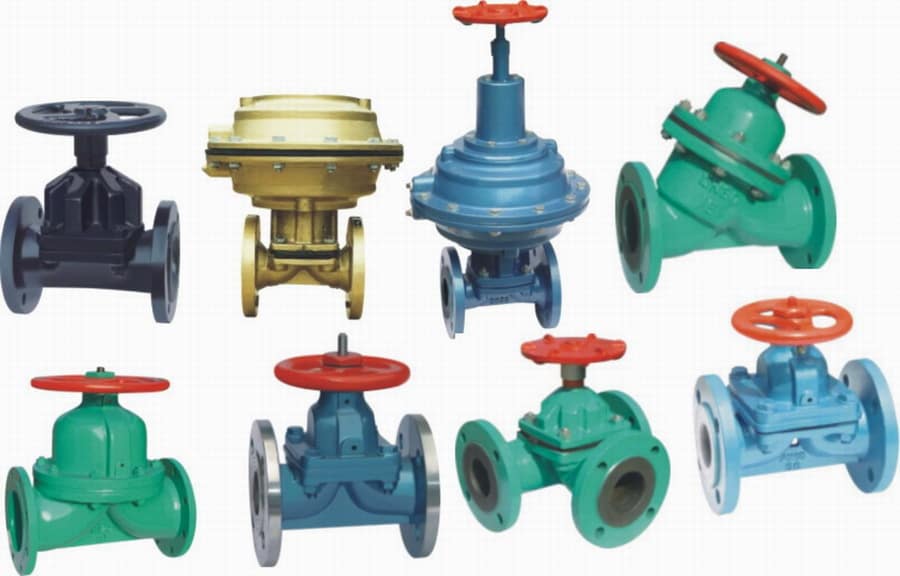
The weir type and straight-through type are the two main types of diaphragm valves widely used for industrial applications. The working of both these valves are similar, but the difference is in the design and applications. So, let’s understand each of these valves in detail.
Straight Through Diaphragm Valve
The straight-through or the full-bore diaphragm valve is similar in appearance to the weir-types; but, it does not include the typical raised weir or saddle and instead has a completely straight flow path. This enables the fluid to pass through the valve freely without any significant obstructions.
The membranes of these valves are usually more flexible and allow greater travel distance, as they have to make contact with the bottom of the valve. However, due to the flexible design of membranes, these valves need more maintenance in comparison to the weir-type valves.
This kind of valve is often utilized in slurries, viscous fluids, and other applications where blockage must be minimized. These valves can be easily cleaned in place using steam or caustic soda without the need to remove them from the pipeline.
Weir Type Diaphragm Valve
The weir-type valve is one of the most common design of diaphragm valve used for small flow control with leak-proof operation. It is also referred to as a saddle-type diaphragm valve.
The weir-type has a raised lip on the body, which acts as a valve seat. The diaphragm comes into contact with the weir during valve operation to control the flow of fluids. In addition, the raised weir helps to reduce the diaphragm movement between the fully open and completely closed positions. This lowers the amount of stress and strain placed on the diaphragm during this process.
The valve design is ideal for hazardous or corrosive liquid and gas, as any membrane failure can be easily contained within the bonnet. Because of the self-draining characteristic of the valve body, they are also recommended for food processing applications.
Advantages Of Diaphragm Valve
• The design of diaphragm valve is very simple, and its installation and operation are easy.
• These valves can be used for both on-and-off operations as well as throttling purposes.
• It is possible to do valve maintenance without having to remove the valve body from the pipeline.
• Diaphragm valves do not need packing glands since there is no chance of leakage from the stem.
• The diaphragm prevents the flowing media from coming in contact with the valve's other working components. Thus, the valve will not get clogged or stuck in one place.
• The different valve body designs, inner lining, and diaphragm materials provide resistance to extremely strong chemicals.
• Maintenance cost for these valves is very less.
• Diaphragm valves are particularly well suited for handling corrosive oils, fibrous slurries, hazardous fluids, and other fluids that do not contain any impurities.
Disadvantages Of Diaphragm Valve
• The diaphragm material limits the use of this valve in case of high temperatures above 150 °C.
• The valve can only be used for environments with a nominal pressure below 1.6 MPa.
• These valves can only be used with non-abrasive fluids as the abrasive particles may damage the diaphragm and cause leakage.
• The raised weir or saddle in valve design will prevent the pipe from draining completely.
Diaphragm Valve Selection Guide
There is no standardized selection guide available in the industry for diaphragm valves. So, selecting the correct valve for your application may be challenging. However, we have tried to list down some important parameters which should be taken into account while selecting these valve.
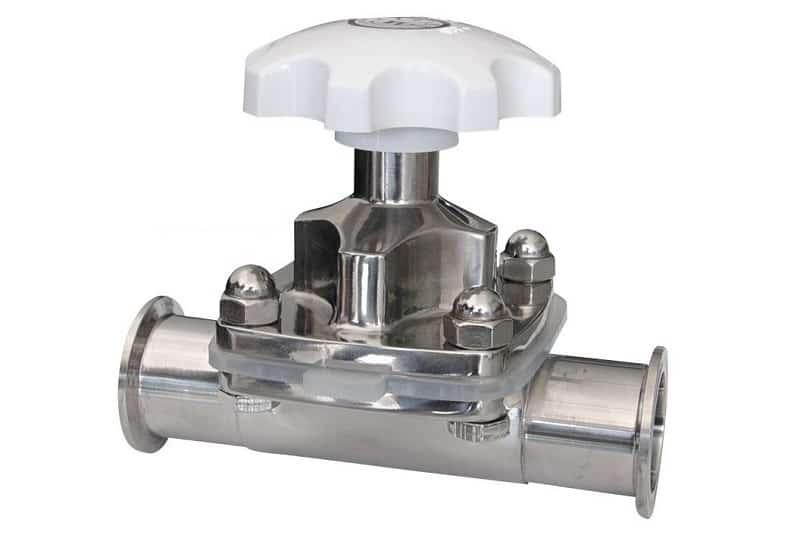
- The size of the valve plays an essential role in any system where it is installed. So, using the valve with the correct inner to outer diameter ratio is crucial for optimum performance.
2. The operational condition of the working medium is the next important factor to consider while selecting a valve. Factors like working pressure, working temperature, flow characteristics, etc., can affect the performance of a valve in any system.
3. Valve selection must also include installation size and external size requirements like nominal diameters, connection methods, connection sizes with pipelines, external sizes, weight limitations, etc.
4. When choosing a diaphragm valve, it is also essential to consider what kind of actuation will be used to close and open the valve. Manual actuators, electric motor actuators, pneumatic actuators, thermal actuators, hydraulic actuators, and more sophisticated control system actuators are some examples of actuator types.
5. The last thing which cannot be missed while choosing the valve is some additional requirements like product reliability, service life, and explosion-proof performance of their actuating devices.
Where Is Diaphragm Valve Used?
Diaphragm valves are widely used in a broad range of industrial applications due to their cost, efficiency, and availability in a variety of configurations. Some of the industries where these valves are used are listed below:
- Water treatment and filtration
- Pharmaceutical manufacturing systems
- Chemical processing
- Radwaste systems in nuclear facilities
- Mining and mineral processing
- Power generation
- Steel production
- Processing of food and beverages
- Sugar, pulp, and paper industry
- Vacuum services
- Corrosive liquids

How To Install A Diaphragm Valve
Correct installation of the valve is particularly important as there a danger of contamination. Foreign objects and pollutants entering pipe systems can lead to the discarding of a whole batch of products, which can significantly impact any business.
So, here are some tips to follow while installing a diaphragm valve.
- Before installation, inspect the pipeline for contaminants and foreign objects and, if required, clean it thoroughly.
- Remove the valve packaging material and ensure there is nothing left inside the valve.
- When installing pipelines and valves, ensure that they are not subjected to tension, compression, bending, impact, or other excessive stress.
- The valve may be placed in any mounting position. Precautions should be taken to ensure that the valve can be serviced from both directions.
- During valve installation, the gap between the pipeline flanges should be at least 20 mm larger than the length of the valve to avoid interfering with the working strips and allow for the installation of the gaskets.
- The flange surface should be parallel and axially aligned to prevent damage to the valve.
- Insert washers and bolts from the pipe side, insert washers and nuts from the valve side, then tighten the bolts and nuts gradually with a torque wrench to the specified torque diagonally.
Maintenance Of Diaphragm Valve
Even though diaphragm valves are considered maintenance-free, similar to any other valve, we need to carry out some basic maintenance of these valves also for prolonged service life. Therefore, in this section, we will check the basic maintenance that should be carried out on these valves.
- Most of the valves have a lubricant nipple at the covering neck, which should be lubricated at frequent intervals.
- Carry out an external inspection of the valve at regular intervals and damages, cracks, leaks, smooth movement of valve, tightness of flange nuts & bolts, etc.
- It is important to inspect and clean the diaphragm at the intervals determined by the manufacturers. Diaphragms are generally cleaned by hot water and a 1.5 percent sodium carbonate solvent. In case you observe any signs of damage to the diaphragm, it is recommended to replace it before putting the valve in use.
Caution:
- Ensure that any pressure in the pipeline is released prior to carrying out any maintenance work on the valve.
- Valve must be tested for tightness and leakage after completion of any repair work.
Summary
We have shared a brief knowledge of what diaphragm valves are and how they work, along with some other important information related to this valve. If you’re reading this, we’d like to thank you and hope you find the information included in the article helpful.
Please get in touch with us if you need any more information regarding the article. You can also leave a comment and express your point of view with us.

